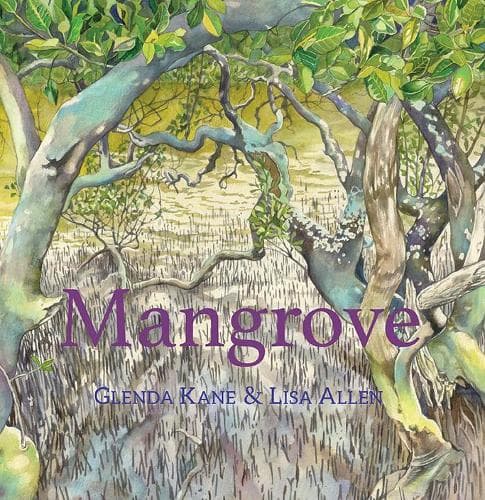3 picture books for tree-loving young readers
Arbor Day is a day of observance where we’re encouraged to plant trees. Here’s three picture books about trees to share with young people.
Reviewed by: Dionne Christian

Kōwhai and the Giants
Renowned Australian artist/writer Shaun Tan describes Kate Parker’s debut picture book as “a beautifully cast tale of hope and resilience” and I’m quoting Tan’s words here because there’s really no better way to sum up this quite magical book with its poetic prose and whimsical illustrations.
Kōwhai, who first appeared from “the golden glow of a beautiful flower… and her voice was the rain and the sea and the cry” is like a forest patupaiarehe (fairy folk), taking care of a tiny seed which grows into a great forest replete with wonderous birds. That is until uninvited guests arrive and the decimation of the forest begins. But Parker, like the best of authors writing for children, offers a glimpse of a more hopeful future in which all of us – no matter how small – can play a role in the reforesting of Aotearoa, one seedling at a time.
While the book is designed to gently stir us to spend time in and be kaitiaki for the natural world, the story behind it is also one of creativity and perseverance. Parker first created a performance piece – part dance, part theatre – for Auckland Theatre Company. This was followed by an art exhibition at the Arataki Visitor Centre in the Waitākere Ranges (after Parker completed an Auckland Council’s artist’s residency at nearby Anawhata). Here, she crafted hand-cut paper artworks placed in a series of plywood boxes and lit from behind to create an enigmatic world with shadows hinting at – as Tan says – memory of a landscape. There was an exhibition of the light boxes in the window of Auckland store Smith and Caughey as part of this year’s Auckland Arts Festival. These lightboxes formed basis for the illustrations in Kōwhai and the Giants, a truly unique book that should be treasured – and acted on.
Mangrove
With a soothing rhyme – the tide goes out and the tide comes in – which echoes the tempo of the sea, it’s easy to get lulled into a false sense of security with this ode to mangroves. Opinions about these salt-tolerant plants are often polarised but there’s no doubting that they’re surprisingly complex and hardy. You have to be, don’t you, to live in the low oxygen conditions found on the boggy water’s edge? Kane’s gentle and easy but informative language is matched by Allen’s beautiful illustrations which have a lightness to them yet are realistic enough that you can almost smell “the black mud’s pong.”
But this is a book about threats to the environment so things take a turn for the more serious when a developer arrives to “scour the shoreline of all its greenery.” For this reason, Mangrove is probably best suited to slightly older readers who can ask questions and reflect on some of the issues it raises and see that the final pages, with the sea lapping on a distant and picturesque shoreline, offers hope for a more environmentally friendly future.
The original paperback edition of this book was released by Penguin Books 12 years ago. It’s poignant to consider that more than a decade on, a new hardback version of the book is needed more than ever if we’re to turn that hope into tangible action.
Tree Beings
Tree Beings reminded me of one of those “101 facts” books because it is chokka with amazing information – and illustrations, stories and puzzles – designed especially for “tree beings” or people who love trees.
These people include a young woman who spends two years living atop a massive redwood, battered by storms and threatened by chainsaws and helicopters, to save it; a scientist who discovered trees have their own internet made of an underground web of fungi; a nine-year-old who, inspired by an African tree planter Professor Wangari Maathai, launched a project which has seen a trillion trees planted, and a New Zealander whose tree occupations saved an ancient West Coast rain forest.
Their stories, concise, pacey and poignant, are peppered throughout the book (along with many more) which contains four big ideas divided into corresponding chapters: that there’s life in trees, that trees help us, that trees are like beings and trees need our help.
It doesn’t matter what age you are, who you’re reading this to or what you already know about trees, I suspect you’ll end up learning something new, interesting and surprising about trees.
Huber, who lives in Otago, has done a masterful job of gathering together a multitude of stories and facts and putting them together in a way that is fascinating for readers of all ages. (Then again, he did once write a children’s book from the point-of-view of a bee which was clever enough to make the finals of the then New Zealand Post Book Awards for Children.) There’s a glossary where scientific terms and concepts are neatly explained – especially helpful for younger readers – along with suggestions throughout the book of where to find more information.
His fine work is deftly complemented by Severgnini’s stunning and detailed illustrations which include the heroes of this story along with some charming flora and fauna pictures. I especially like the “boat treehouse” which illustrates the story of Professor Nalini Nadkarni who’s made it her life’s work to use the arts – even working with rap artists to make “tree music and dances” – to bring people and trees together. The design is crisp and clean, making it hard to believe that so much information has been packed into less than 100 pages without the whole thing looking like an overly busy hodgepodge. Indeed, it’s sophisticated coming together or writing, art and design yet entirely accessible and simply delightful.
Reviewed by Dionne Christian


